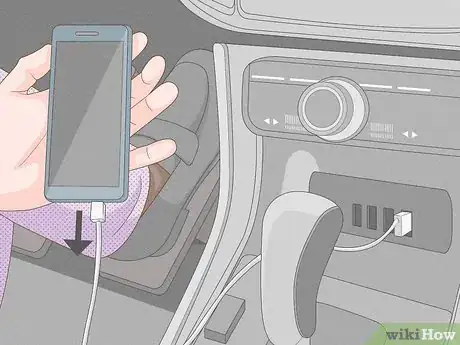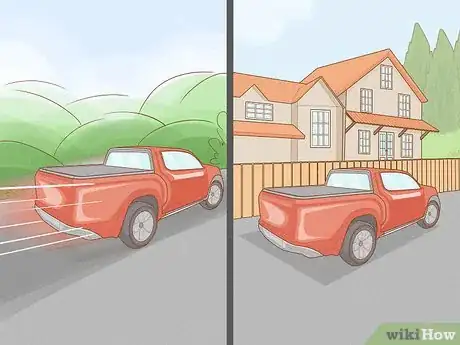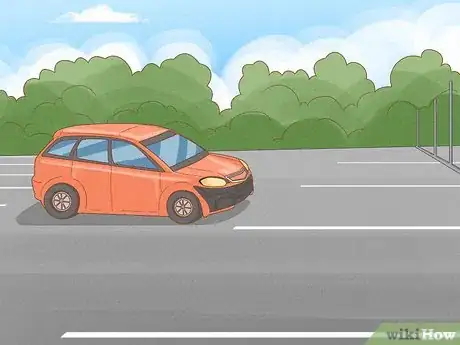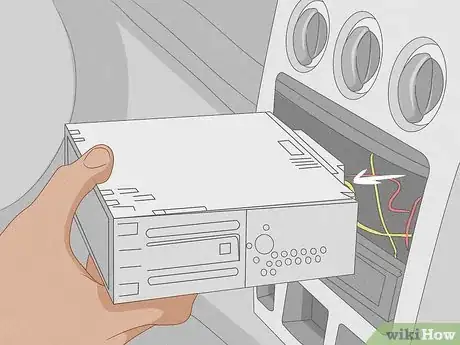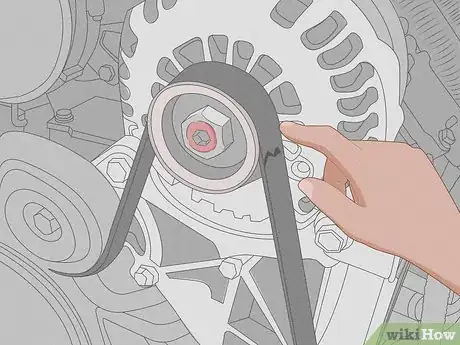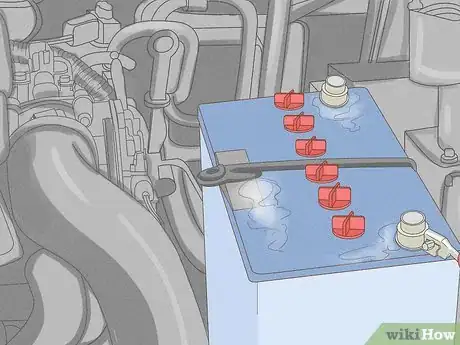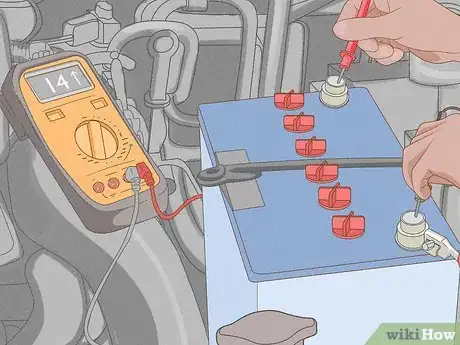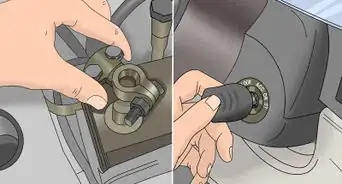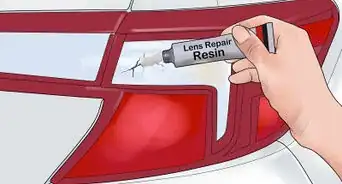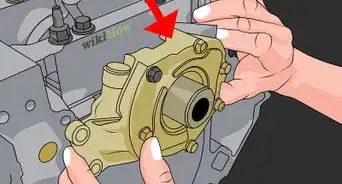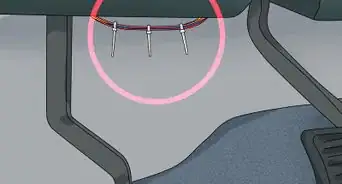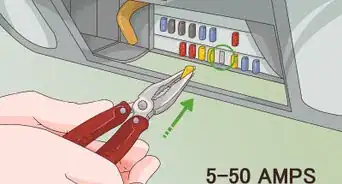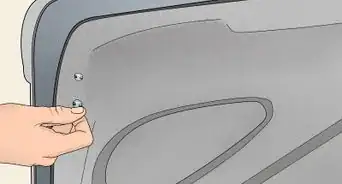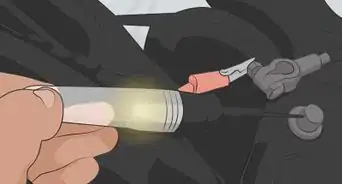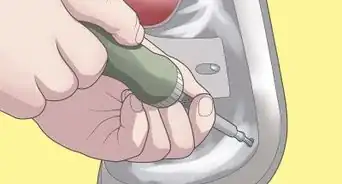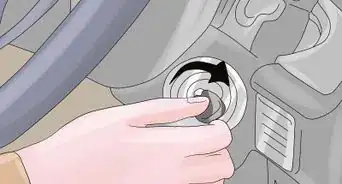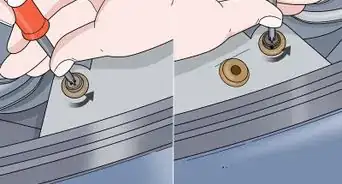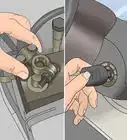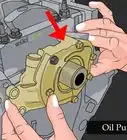This article was co-authored by American Automobile Association and by wikiHow staff writer, Hannah Madden. The American Automobile Association (also known as "AAA" or "Triple A") is a federation of motor clubs throughout North America and a non-profit organization focused on the safety of the driving public and the future of mobility. Best known for providing its members with roadside assistance, AAA has also been providing auto repair services and insurance for auto, home, life, and business for over a century. Founded in 1902, AAA is headquartered in Heathrow, Florida.
There are 8 references cited in this article, which can be found at the bottom of the page.
wikiHow marks an article as reader-approved once it receives enough positive feedback. In this case, several readers have written to tell us that this article was helpful to them, earning it our reader-approved status.
This article has been viewed 831,617 times.
If you’re driving along the road and your battery light comes on, you may only have a few minutes before your car stalls. Try to get to a safe location right away to pinpoint the problem and figure out what to do next. You might have an issue with your battery, your alternator, or the fuses in your engine, which you can diagnose on your own or with a professional’s help.
Steps
What’s the first thing to do when the battery light comes on?
-
1Turn off anything unnecessary using the battery. This includes the heater, the air conditioning, and the radio. Unplug anything else that’s drawing power from your car, like a phone charger or a cigarette lighter.
- Attachments usually don’t drain much power, but when you’re having a battery problem, every little bit of power counts.
- Also try to avoid using any electric features, like the power windows. If the windows are down, leave them down, and vice versa.
- If it’s dark out, then leave your headlights on. Driving without them on is more dangerous than drawing power from the battery. The same goes for leaving your wipers on if it’s raining.
-
2Drive to your destination if it’s only a few minutes away. Once the battery light comes on, you have anywhere from 5 to 30 minutes of power left before the battery dies and the car stops working. If you were just making a quick run to the supermarket or are a few minutes away from work, you can probably make it. Just make sure all the electric appliances are off so you have as much time as possible.[1]
- This also counts if you happen to be a few minutes from a mechanic or repair shop. You can drive straight there and get the problem looked at.
Advertisement -
3Pull over if you’re far away from your destination. If you're more than a few minutes from your destination, then you probably don’t have enough juice to get there before the battery dies. In this case, it’s important to park in a safe spot or you’ll end up stranded on the road.[2]
- If you’re on the highway and can’t get to the next exit in time, pull over onto the shoulder lane instead.
- If you stop and turn off the car, don’t plan on moving it again. You probably won’t be able to start the engine.
What causes the battery light to come on?
-
1It could be a blown fuse. In most cases, the car's fuse box is under the dashboard or the driver's side under the hood. Open the box and touch a voltmeter's leads to the back of each fuse, but focus on the ones that connect to the battery. If you get a reading, then the fuse is good. If not, then the fuse is blown. Pull out the blown fuse and slide a new one into that spot.[4]
- The fuse box location is different in each car, so check your owner's manual if you can't find yours.
- Replacement fuses for cars are cheap and you can buy them online.
- If you don't have a voltmeter, you can still check for blown fuses. Carefully pull out each fuse and look at its bottom lead. If it's silver and shiny, the fuse is good. If it's broken or charred, then the fuse is blown.
- Car fuses should last for years, so if you blow multiple fuses within a short period, there is definitely an electrical problem. Bring the car to a mechanic for an inspection.
-
2It might be a broken alternator belt. Damage to the alternator belt is one of the most common reasons for a power failure. Find the alternator on the side of your engine (it looks like a small, round compartment with vents around it). You'll also see a belt connecting the alternator to the battery. Inspect that belt for damage. If it’s cracked, frayed, or totally broken, then this is probably what caused your power failure.[5]
- The alternator is always somewhere around the engine, but the exact location depends on the type of car you have.
- You can fix the alternator belt yourself if you have a replacement. However, don’t try to do this on the side of the road. Either get the car home first or take it to a repair shop.
- Alternator belts usually cost between $100 and $200 to replace.
-
3It could be a dead battery. If your car’s battery is old, it might not be able to charge fully (or at all). If that’s the case, you may need to replace your battery entirely. You can do it on your own or get a professional mechanic to do it for you.[6]
- Most car batteries last around 3 to 5 years.
- Changing your battery is easier than you might think. First, unscrew the negative and positive terminals in that order and pull the wires off. Then unscrew the bar holding the battery down and pull the battery out of position. Slide a new battery in, re-attach the bar, and put the wires back onto the battery terminals.
- If your battery terminals look corroded, you may just need to clean them off. First, unscrew the nut on the negative terminal with a wrench and pull the wire off. Do the same for the positive side. Then scrub the terminals and clamps with water and baking soda and wipe them down with a rag. Re-connect the terminals and see if the car starts correctly afterward.
How can you tell if it’s the alternator or the battery?
-
1Measure your battery’s voltage to test its health. Pop the hood and find the battery, which looks like a small box with 2 wires coming out. Press the black lead of the multimeter tool to the negative battery terminal and the red lead to the positive one. A healthy battery should read 12.6 volts.[7]
- Since your battery light came on, the reading will probably be lower. This means that either your battery isn’t holding a charge or the alternator isn’t charging it properly.
- In some high-performance and German cars, the battery is actually in the back, where the trunk would be. If you can't find the battery on your car, check your manual.
-
2See if the voltage increases with the engine on to test the alternator. Turn the car on and let it idle for about 10 minutes. Press the multimeter tool to the battery terminals to check the reading again. If the reading goes higher, then this means that the alternator is charging the battery and it’s probably your battery that’s the problem. However, if the reading doesn’t go up, then it probably means your alternator isn’t charging the battery properly.[8]
- If your battery is totally dead, it might not start at all for this test. You can jumpstart it with another car or a portable charging station to get it started.
Community Q&A
-
QuestionWhat does it mean if the battery light comes on for one second when I start the car?
 Community AnswerThe lights in a car often come on when you start it to show they are working. If the lights go off quickly, there is no issue with your car.
Community AnswerThe lights in a car often come on when you start it to show they are working. If the lights go off quickly, there is no issue with your car. -
QuestionMy battery died after leaving the radio on for a while, is there a chance it fixes itself?
 Community AnswerYour battery cannot recharge itself. You can have it tested at Auto Zone or Advance Auto Parts free of charge. That will let you know if your battery can be recharged or if you need to replace it.
Community AnswerYour battery cannot recharge itself. You can have it tested at Auto Zone or Advance Auto Parts free of charge. That will let you know if your battery can be recharged or if you need to replace it. -
QuestionWhat is wrong if several warning lights stay on when I start my car, then the car dies?
 Community AnswerYou may need to replace the battery or the alternator. You can have it checked for free at Auto Zone or Advance Auto Parts.
Community AnswerYou may need to replace the battery or the alternator. You can have it checked for free at Auto Zone or Advance Auto Parts.
Warnings
- Never ignore the battery light coming on. This is a serious problem and if you don’t react, your car could stall.⧼thumbs_response⧽
- Always wear gloves when you're working on your car to protect your hands.⧼thumbs_response⧽
References
- ↑ https://www.youtube.com/watch?t=366&v=0jRaCMx07H4&feature=youtu.be
- ↑ https://www.youtube.com/watch?t=416&v=0jRaCMx07H4&feature=youtu.be
- ↑ https://www.consumerreports.org/car-maintenance/what-to-do-when-your-car-stalls/
- ↑ https://www.dmv.org/how-to-guides/fuse.php
- ↑ https://exchange.aaa.com/car-care/repair-maintenance/car-battery-maintenance/
- ↑ https://www.consumerreports.org/car-batteries/how-hot-weather-affects-your-car-battery-what-to-do-about-it/
- ↑ https://www.themechanicdoctor.com/how-to-test-car-battery-with-digital-multimeter/
- ↑ https://www.themechanicdoctor.com/how-to-test-car-battery-with-digital-multimeter/
- ↑ https://www.popularmechanics.com/cars/car-technology/a26549/car-battery-how-to/
